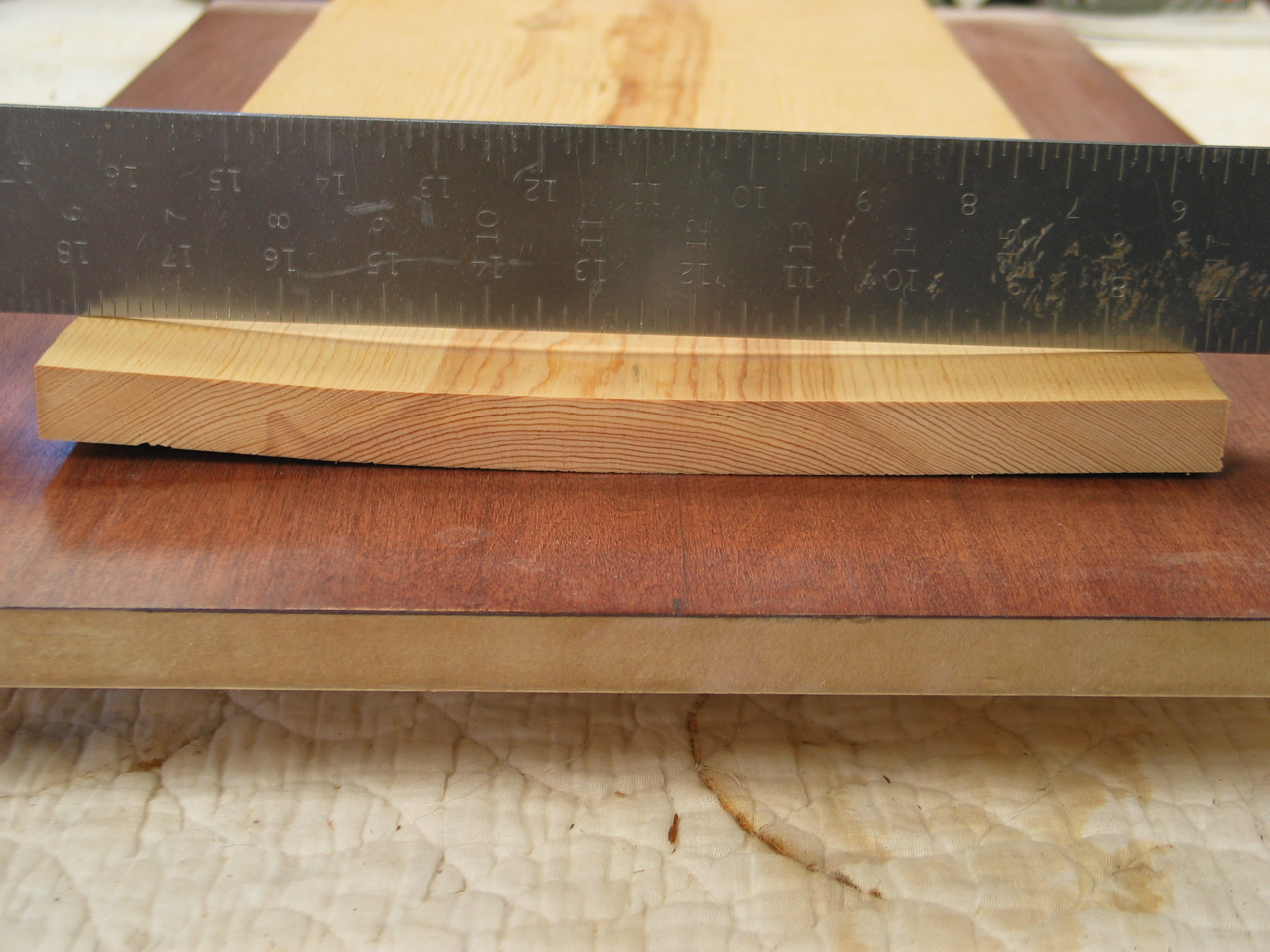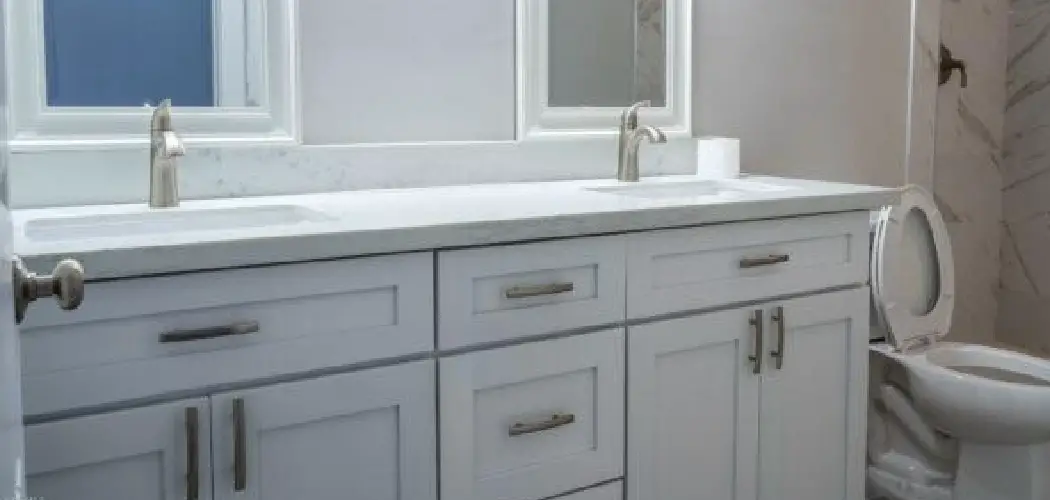Identifying the Cause of Warping

Before you begin fixing a warped cabinet door, it’s crucial to understand why it warped in the first place. Knowing the root cause will help you prevent future warping and ensure your repair is effective.
Wood Properties and Warping
The type of wood used in the cabinet door plays a significant role in its susceptibility to warping. Some woods are naturally more prone to warping than others due to their grain structure and moisture content.
- Hardwoods like oak, maple, and cherry are generally more stable than softwoods, but they can still warp if not properly dried or cared for.
- Softwoods like pine, fir, and cedar are more prone to warping due to their looser grain structure and tendency to absorb moisture.
Wood warping is caused by uneven moisture distribution within the wood. When one side of a wood panel absorbs more moisture than the other, it expands, causing the panel to bend or warp.
Impact of Humidity and Temperature Changes
Changes in humidity and temperature can significantly affect wood warping.
- High humidity causes wood to absorb moisture and expand. This expansion can lead to warping, especially if the wood is not evenly exposed to moisture.
- Low humidity causes wood to lose moisture and shrink. This shrinkage can also lead to warping, particularly if the wood has already absorbed a lot of moisture.
- Temperature fluctuations can exacerbate the effects of humidity changes, as wood expands and contracts with temperature changes. This can lead to warping, especially if the wood is exposed to extreme temperature swings.
Inspecting a Warped Cabinet Door
To identify the source of the warping, carefully inspect the warped cabinet door.
- Check for visible signs of moisture damage: Look for signs of water stains, mold, or mildew, which indicate that the door has been exposed to excessive moisture.
- Examine the grain pattern: Observe the wood grain to see if it is consistent throughout the door. If the grain pattern is uneven or distorted, it could indicate warping due to uneven moisture absorption.
- Measure the door’s dimensions: Compare the dimensions of the warped door to the dimensions of a similar, non-warped door. This will help you determine the extent of the warping.
- Inspect the door’s hinges and frame: Ensure the hinges are properly secured and that the door frame is level. If the hinges are loose or the frame is uneven, it could contribute to warping.
Straightening Techniques: How To Straighten Warped Wood Cabinet Door

Now that you’ve identified the cause of your cabinet door’s warping, it’s time to tackle the straightening process. There are several techniques you can use, each with its own advantages and disadvantages. We’ll explore the most common methods and provide guidance on choosing the best approach for your specific situation.
Steam Treatment, How to straighten warped wood cabinet door
Steam treatment is an effective method for rehydrating and straightening warped wood. Moisture penetrates the wood fibers, allowing them to relax and regain their original shape.
- To begin, set up a steamer in a well-ventilated area, ensuring it’s safely positioned away from flammable materials.
- Gently apply steam to the warped surface of the door, focusing on the areas that are most distorted.
- As the steam penetrates the wood, the warped areas will begin to soften and become more pliable.
- Once the wood is sufficiently softened, use a flat surface or a jig to gently press the door back into its desired shape.
- Secure the door in its straightened position with clamps or weights to allow the wood to dry and retain its new shape.
- Allow the door to dry completely before removing the clamps or weights.
Heat Application
Applying heat with a heat gun or iron can also help to straighten warped wood. Heat causes the wood fibers to expand, making the wood more flexible and easier to manipulate.
- Use a heat gun or iron set to a low temperature to avoid scorching the wood.
- Gently apply heat to the warped areas, moving the heat source continuously to prevent localized burning.
- As the wood heats up, it will become more pliable. Use a flat surface or a jig to gently press the door back into its desired shape.
- Secure the door in its straightened position with clamps or weights to allow the wood to cool and retain its new shape.
- Allow the door to cool completely before removing the clamps or weights.
Clamping and Weighting
Clamping and weighting is a technique that applies pressure to the warped areas of the door, forcing it to gradually straighten over time. This method is particularly effective for minor warping.
- Choose clamps or weights that are appropriately sized for the door and the extent of warping.
- Position the clamps or weights along the warped areas, applying even pressure to the door.
- Leave the clamps or weights in place for several days or weeks, allowing the wood to slowly reshape under pressure.
- Monitor the progress regularly and adjust the clamping pressure as needed.
Comparison of Techniques
Each straightening technique has its own advantages and disadvantages:
| Technique | Advantages | Disadvantages |
|---|---|---|
| Steam Treatment | Effective for severe warping, can rehydrate dry wood | Time-consuming, requires careful monitoring to prevent damage |
| Heat Application | Faster than steam treatment, can be used for both minor and severe warping | Risk of scorching or burning the wood if not used carefully |
| Clamping and Weighting | Simple and inexpensive, effective for minor warping | Time-consuming, may not be effective for severe warping |
Preventing Future Warping

Once you’ve straightened your warped cabinet door, the next step is to prevent it from warping again. This involves understanding the factors that contribute to warping and implementing strategies to mitigate them.
Storing and Handling Wood
Proper storage and handling of wood are crucial for preventing warping. Wood is a hygroscopic material, meaning it absorbs and releases moisture from the surrounding environment. This moisture absorption and release can cause the wood to expand and contract, leading to warping.
- Store wood in a dry, well-ventilated area away from direct sunlight and heat sources. These factors can cause uneven drying and contribute to warping.
- Stack wood boards flat with spacers between them to allow for air circulation. This prevents moisture from becoming trapped and causing uneven drying.
- Avoid storing wood in areas with high humidity, such as basements or crawl spaces. High humidity can lead to excessive moisture absorption, resulting in warping.
- Handle wood with care, avoiding dents, scratches, or other damage that can disrupt the wood’s structure and increase its susceptibility to warping.
Maintaining a Consistent Humidity and Temperature Environment
Maintaining a consistent humidity and temperature environment is essential for preventing warping, especially in finished wood products like cabinet doors.
- Ideally, aim for a relative humidity between 40% and 60% and a temperature between 65°F and 75°F. This range minimizes the potential for wood to absorb or release excessive moisture.
- Use a dehumidifier in humid environments to lower the humidity level. In dry environments, a humidifier can help increase humidity levels.
- Avoid placing wood furniture or doors near heat sources like radiators or fireplaces. These sources can cause uneven drying and contribute to warping.
Sealing and Finishing Wood
Sealing and finishing wood provide a protective barrier against moisture and other environmental factors that can cause warping.
- Apply a sealant like wood primer to create a moisture-resistant barrier. This helps to prevent the wood from absorbing or releasing moisture too quickly.
- Use a finish like polyurethane or varnish to protect the wood from scratches, dents, and UV damage. These finishes also help to seal the wood and prevent moisture absorption.
- Apply multiple thin coats of sealant and finish rather than one thick coat. This allows for better penetration and a more even finish, minimizing the risk of warping.
Best Practices for Preventing Warping in Different Wood Species
| Wood Species | Storage and Handling | Humidity and Temperature | Sealing and Finishing |
|---|---|---|---|
| Oak | Store flat with spacers, avoid direct sunlight | Maintain 40-60% humidity, 65-75°F temperature | Apply a wood primer and polyurethane finish |
| Maple | Store flat with spacers, avoid high humidity | Maintain 40-60% humidity, 65-75°F temperature | Apply a wood primer and varnish finish |
| Cherry | Store flat with spacers, avoid direct sunlight and heat | Maintain 40-60% humidity, 65-75°F temperature | Apply a wood primer and oil-based polyurethane finish |
| Pine | Store flat with spacers, avoid high humidity | Maintain 40-60% humidity, 65-75°F temperature | Apply a wood primer and water-based polyurethane finish |
How to straighten warped wood cabinet door – Warped wood cabinet doors can be a frustrating problem, but with a little patience and the right tools, you can often restore them to their original shape. If you’re looking to upgrade your kitchen, consider investing in glossy wood kitchen cabinets to create a sleek and modern look.
Once your cabinets are straightened, you can enjoy the beauty of your new kitchen for years to come.
Warped wood cabinet doors can be a common issue, often caused by changes in humidity. If you’re looking for a stylish and durable cabinet that might resist warping, consider the ashley furniture mirimyn wood door accent cabinet blue.
While it’s not a guarantee against warping, the solid wood construction and elegant design may help you avoid this frustrating issue.
